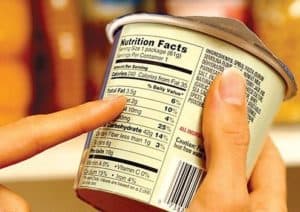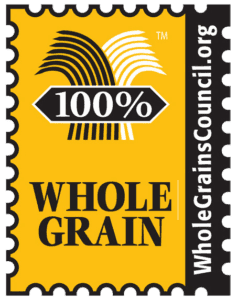 In the 30-Day Nutrition Upgrade program, players earn points by choosing whole grain foods instead of refined grain foods. But distinguishing one from the other can sometimes require an advanced degree in label reading! As one of my Upgraders recently posted in our private Facebook group:
In the 30-Day Nutrition Upgrade program, players earn points by choosing whole grain foods instead of refined grain foods. But distinguishing one from the other can sometimes require an advanced degree in label reading! As one of my Upgraders recently posted in our private Facebook group:
“Labels on food can be confusing. Pasta labels are especially confusing – one says ‘durum wheat semolina’ and another says ‘enriched durum wheat semolina’. I know enriched means refined but if it doesn’t say enriched does that mean it’s whole grain?”
Let’s break down some of this terminology:
“Durum” is a strain of wheat that is used mostly for pasta, due to its higher protein content. (Think of “Durum” as its first name and “Wheat” as its family name.) But unless it says “whole grain” you can assume that it is refined, which means that the nutritious germ and fibrous bran have been removed.
The word “Semolina,” on the other hand, refers to the fact that the durum wheat is coarsely ground–again, in order to produce good pasta texture. The word “semolina” is sort of like the designation “Esquire” after a lawyers name; it’s not part of the lawyer’s identity like her first or last name but an indication of her preparation and function.)
The word “enriched” almost always signals a refined grain. Refined grains are often enriched in an effort to replace the nutrients that are lost to refining. You will virtually never see “enriched whole wheat,” because it would be unnecessary to replace nutrients that have not been removed. However, the absence of the word “enriched” doesn’t mean that it is not refined.
 You can save yourself a lot of label reading by looking for the 100% whole grain stamp. When you see this (or the words “100% whole grain”) on the front of the package, you don’t even need to flip the package over to see the ingredient list….that’s the golden ticket right there.
You can save yourself a lot of label reading by looking for the 100% whole grain stamp. When you see this (or the words “100% whole grain”) on the front of the package, you don’t even need to flip the package over to see the ingredient list….that’s the golden ticket right there.

does any company make whole grain pappardella??? Love this pasta shape but cannot find any whole grain
You never answered the question.
Durum is the cultivar of wheat. Semolina is the grind.
So Durum Semolina pasta is not whole grain UNLESS is specifically says 100% Whole grain.
Yep, that was my take away from your initial essay! Thanks for clarify this in fewer words and more clearly than other sites.
Semolina is a method of grinding wheat. It is less refined, more coarse. I love when I find a crusty loaf that is bottom coated w/semolina. Gives it a little crunch.
Is 100 percent whole wheat pasta semolina? Also, is organic wheat whole wheat?
Semolina simply refers to how the grain is ground–not whether it is whole grain or not. If you are buying pasta, chances are good it was made with the coarser semolina flour.
Organic refers to how the wheat was grown and not whether it is whole grain. You can buy organic flour that is refined and you can buy organic flour that is whole grain.
Think of it this way: You can buy a red shirt that is long sleeved or a red shirt that is short sleeved. Knowing that the shirt is red doesn’t tell you anything about the sleeve length (and vice versa).
Doesn’t ‘course’ or less ‘ground’ mean that it is less processed and, in this way, ‘whole?’ After all that is what ‘whole’ refers to in ‘whole grain.’
No, that’s not what “whole” refers to in whole grain.
A whole grain is one where the bran and germ have not been removed. (An intact whole grain is also unground.)
Refined grains can be ground coarsely or finely. They are still refined.
For that matter, whole grains can be groud coarsely or finely. They are still whole grains. But they are no longer intact.
I am having a hospital procedure and can eat pasta but is there such thing as white pasta
Thanks – very helpful. I’ve read elsewhere that semolina is necessarily a whole grain flour, which is not correct as you have mentioned. Also, why is the coarse grind of semolina good for pasta texture?
The problem with “whole grain” is that today’s is a “franken-whole-grain”. The bran and germ are isolated ingredients put back together and then the label is slapped on that says “whole grain”. The whole wheat berry, containing the original bran, germ, and endosperm should not be separated. Separating is altering the food matrix, which changes our metabolic response (specifically blood glucose) and other things that science is now discovering. Turns out industrializing our food supply isn’t working out. Unless it’s stone ground, cold milled, I don’t care what “whole grain” label/certification you have on there!